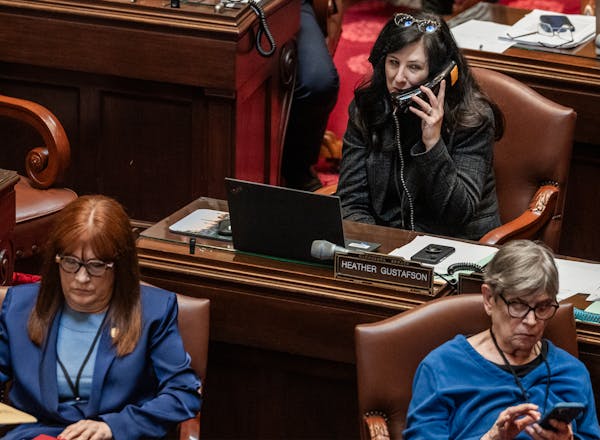The movie "Titicut Follies" was a disruptive force. So too is the ballet it has inspired.
When lawyer-turned-documentarian Frederick Wiseman filmed the abusive conditions in a Massachusetts state prison for the criminally insane in 1967, he probably never imagined that his controversial account would one day transfer onto the stage. But 50 years later, he and Minneapolis choreographer James Sewell have accomplished the unthinkable. Their deeply affecting collaboration premiered Friday night at the Cowles Center in Minneapolis.
The ballet doesn't re-enact the film; it references scenes and atmosphere. Steven Rydberg's set and costumes are chillingly bleak, marked by startling pops of color. Lenny Pickett's score is an appropriately twisted array of musical genres and off-kilter rhythms blended with looped dialogue from the movie. These elements make up the cinematic landscape within which Sewell places his company members, all of whom embrace roles they may never shake off.
The work explores a battle between body and mind — when the psyche is tormented from within, what is the outward physical response? In Sewell's choreography, this question is answered through a combination of awkward grace, anxiously twisting hands, raging abandon and facial expressions that shatter when hope turns to hurt.
But just as often, the torment comes from the outside. It's seen in the cruelty of callous professionals, treatments akin to torture, the depravity of guards who use the inmates as entertainment (thus the title "Titicut Follies," the annual talent show). It is the heartbreaking moment when supposed caretakers bully guest artist Myron Johnson, a haunted man in solitary confinement (his vulnerability is terrifying). And it is the mock jazz funeral when an inmate's body is laid to rest.
In a fascinating twist, Sewell inserts a scene with him performing Vaslav Nijinsky's 1912 ballet, "Afternoon of a Faun." The onetime star of the famed Ballets Russes fell into madness later on. The reference is a through-line between the collaborators and their subject matter.
Sewell and Wiseman tell the stories of reviled people without romanticizing their experiences. This is a critical break from many ballets in which happy endings, or a semblance of peace, are the norm. "Titicut Follies" offers neither, nor should it. Sometimes we must bear witness to things we do not want to see or know. A ballet is an unexpected vehicle for doing so, but in this case it's a bold and often brilliant choice.
Caroline Palmer is a Twin Cities dance critic.

Expect clearer air this summer in Minnesota, thanks to a milder wildfire season
Supreme Court sides with music producer in copyright case over sample in Flo Rida hit

